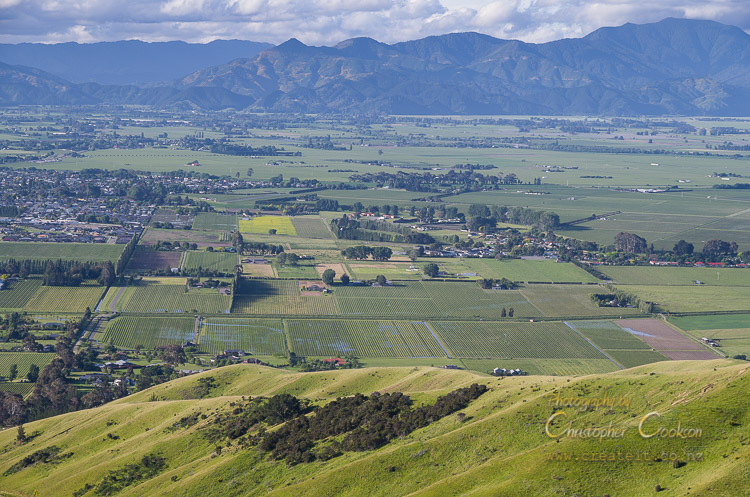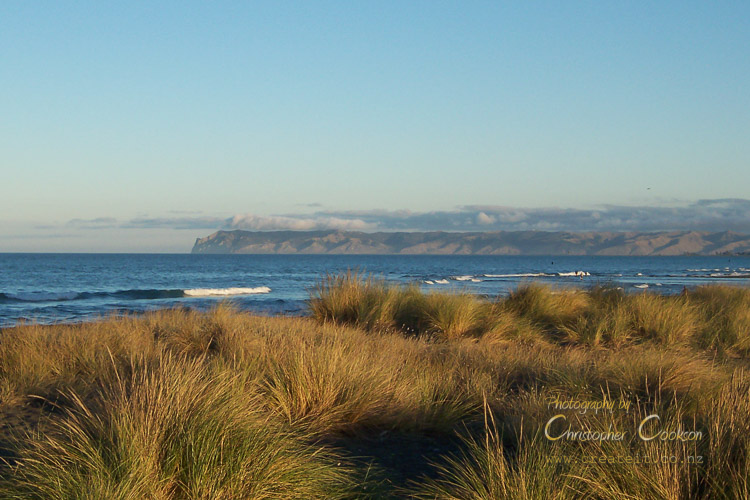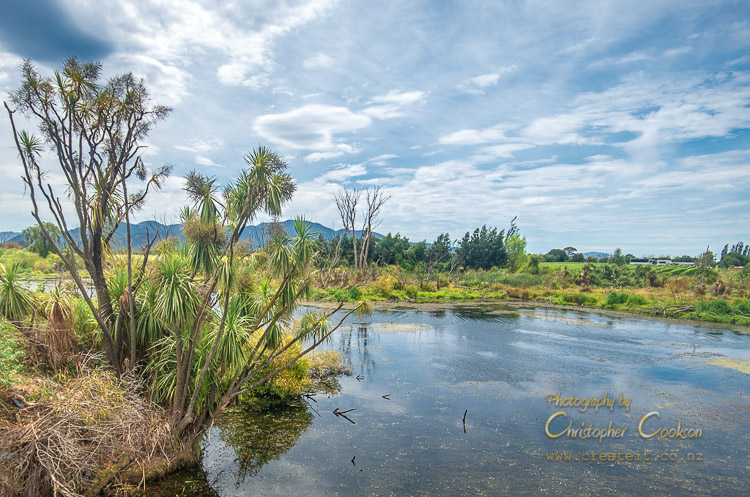Blenheim Ecological District
By: Christopher Cookson
Last Modified: 14-8-2023 16:01

© Christopher Cookson License this image
The Blenheim Ecological District includes most of the Wairau plain from the western bank of the Waihopai River to Cloudy Bay in the east, with the Richmond Range and Wither Hillls bounding the district to the north and south respectively. The area is mostly flat, and a highly modified environment with very little in the way of indigenous flora or fauna remaining.
Geology and Climate
Soils are mostly alluvium with a mix of coarse gravel and silt from glacial outwash particularly in the south from during the last ice age, with more recent alluvium deposits from the Wairau in the north. The Wairau Fault runs through the area, and a series of beach ridges, unique in New Zealand, provide a record of seismic uplift events. The highest point in the area is only 251 metres above sea level. Climate is relatively warm and dry, although frosts do occur in winter. Significant natural features are the Wairau River, the oxbow lake Grovetown Lagoon, Ōpaoa River, Omaka River, Taylor River, and Wairau Lagoons, which are one of New Zealand’s most significant river lagoons.
Flora
Prior to human settlement, the area was likely a mix of podocarp forest and wetland. After Polynesian arrival, fires resulted in a change in ecology with mānuka and kānuka scrub and tussock grassland becoming dominant. European settlement resulted in extensive draining of wetlands and diversion or containment of waterways, along with clearing of native vegetation. Initially the area was used for pastoral farming however most of the area is now used for viticulture.
Although very little indigenous vegetation remains, some significant habitats exist including the salt marsh environment of the Wairau Lagoons, and along the Rarangi coastline.
Trees and Shrubs
A partial list of some of the indigenous tree species observed in the area.
Herbaceous Flowering Plants
Harakeke / New Zealand Flax
Fauna
The Wairau Lagoons is a nationally significant habitat for birds, particularly waterfowl, and is home to over 70 species, while Rarangi beach is home to several endangered invertebrate species. Whitebait are found in the Wairau, and some galaxiad species and short finned eels can even be found in urban drainage channels in Blenheim.
Some indigenous bird species have adapted to urban environments with silvereyes and fantails reasonably common visitors to home gardens.
Birds
Black Billed Gull
Royal Spoonbill
Little Shag
Kahu / Australasian harrier
Fish
Invertebrates
Unique invertebrates in the district include the Cloudy Bay mat daisy jumper moth, found only on a section of Rarangi beach, and a variety of other insects.

The Wairau Lagoons are one of the most significant wetlands in Marlborough.
© Christopher Cookson License this image

Rarangi beach is an important ecosystem
© Christopher Cookson License this image

Grovetown Lagoon is an oxbow lake formed from a section of the Wairau River that provides an important bird habitat.
© Christopher Cookson License this image
Web Links
Cite this page
Cookson, C. (2023). Blenheim Ecological District. Retrieved April, 25, 2024, from https://www.marlboroughonline.co.nz/marlborough/information/natural-history/marlborough-ecological-districts/blenheim-ecological-district/